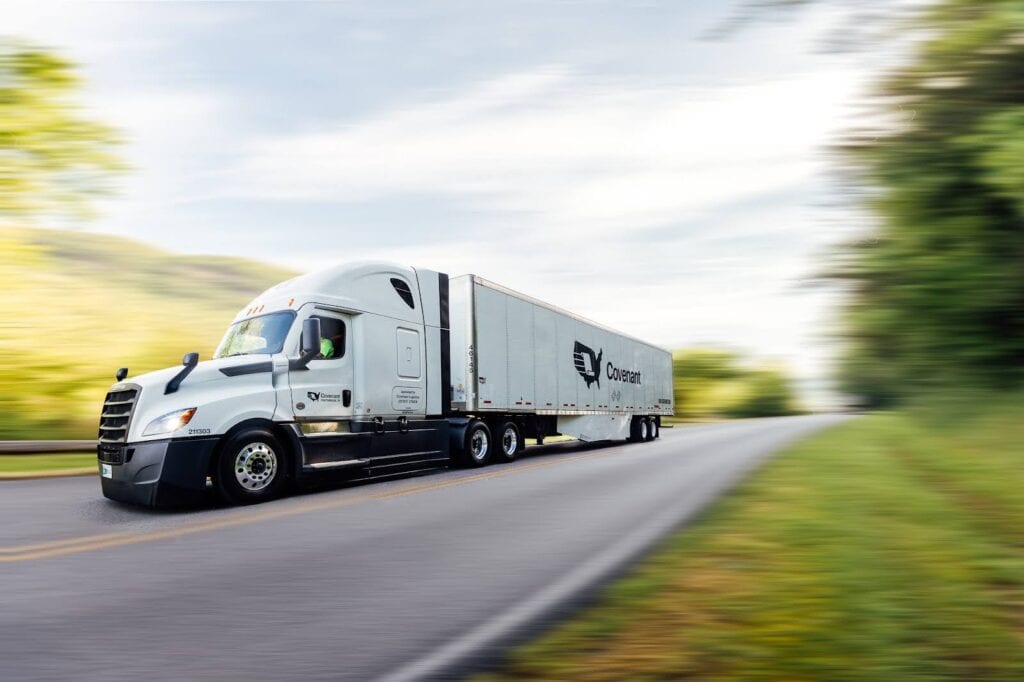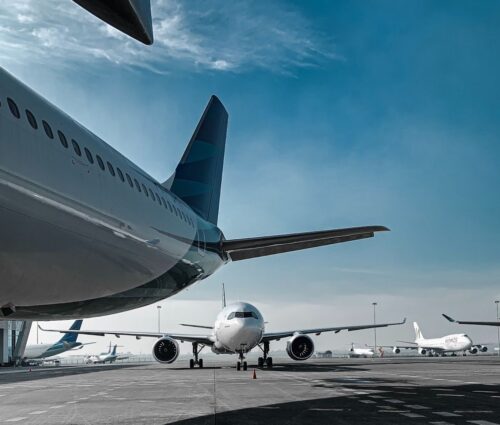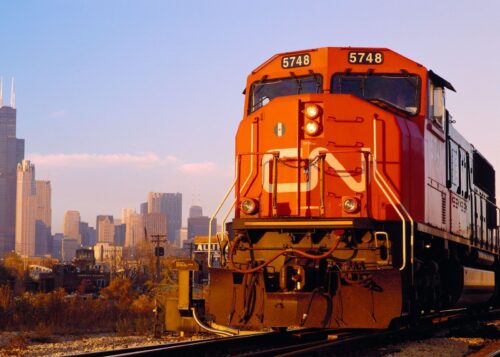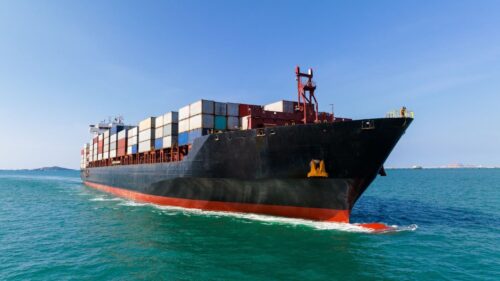The 6 Types of Transportation in Logistics

In today’s globalized world, understanding the types of transportation in logistics is paramount.
With the upsurge in international trade and industries flourishing worldwide, efficiently moving cargo has never been more essential. Knowing how to transport goods across diverse transportation routes cost-effectively and efficiently is crucial for any business.
The choices made within the logistics industry can affect everything from cost to delivery speed, and even environmental impact.
Modes of Transportation Overview
Transportation has been an integral part of human history. From the early days of animal-driven carts to the extensive rail networks and vast cargo ships of today, our methods for moving goods have constantly evolved.
With the dawn of the industrial era and the subsequent surge of international trade, the demand for more efficient modes of transportation grew exponentially. Modern supply chain demands are more complex than ever, with goods and raw materials needing to traverse continents.
Technological advancements have further transformed the landscape, offering solutions that streamline operations, ensuring that goods arrive at their final destination efficiently and reliably.
Transportation Modes by Type
Diving into the different modes of transportation, it’s evident how each has been tailored to meet specific industry needs.
These choices in transportation methods determine not only the efficiency of the supply chain but also its environmental footprint and cost implications.
1. Road and Truck Transport
Road transportation, primarily involving trucks, has been a cornerstone in the logistics industry for decades. Trucks became the most versatile solution as direct routes became necessary to connect industries to ports or railheads.
The truckload sector alone employs millions globally, showcasing its significance. Major employers include companies like Averitt Express. Industries like agriculture heavily rely on road freight, given the perishable nature of agricultural produce.
Benefits: Road transport offers delivery flexibility directly from the producer to the consumer, accommodating smaller shipments efficiently. It provides a cost-effective solution for short distances and is often the preferred mode when the final destination isn’t directly served by rail or sea networks.
Disadvantages: Despite its ubiquity, road transport is vulnerable to delays due to weather conditions or traffic. Moreover, its environmental concerns, primarily emissions, have been a consistent drawback.
Restrictions: Weight restrictions can sometimes hinder the transportation of large volumes. Certain dangerous materials may also require special permits or trucks.
Best for Goods: Road transportation is ideal for agricultural produce, finished products for retail, and any cargo that requires a direct route to its destination.
2. Airplane Transport

Air transportation revolutionized the logistics industry in the 20th century. Initially limited to passenger planes, the domain expanded its horizons to facilitate freight shipping.
With the introduction of air cargo planes, goods could be transported across continents within hours. The electronics, pharmaceuticals, and fashion industries heavily rely on air freight due to the time-sensitive nature of their products.
These sectors demand fast turnarounds, and air transport provides the swiftness they require. While it’s challenging to ascertain exact employment figures solely for air freight, the air transport sector supports millions of jobs globally, both directly and indirectly.
Benefits: Speed is the prime advantage of air shipping. Deliveries that take weeks by sea can be achieved in hours, making it invaluable for time-sensitive products.
Disadvantages: Cost is the significant drawback. Air freight can be substantially more expensive than other modes. Moreover, it is vulnerable to disruptions from weather conditions and air traffic control delays.
Restrictions: Weight and size restrictions are more stringent in air transport. Certain dangerous materials or goods, like flammable substances, also face tighter regulations.
Best for Goods: Ideal for high-value, low-volume shipments such as electronics, pharmaceuticals, and urgent documents.
3. Rail Transport

From steam-powered locomotives of the 19th century to today’s electrified extensive rail networks, rail transport has consistently evolved to address the needs of an ever-growing industrialized world.
Offering a middle ground between air and sea transport in terms of speed and cost, rail transportation plays a pivotal role, especially in landlocked areas. Industries like coal, minerals, and agricultural produce, which require shipping large volumes over long distances, often turn to rail.
Extensive rail networks across continents like Europe and Asia facilitate trans-global transportation of goods. The rail industry employs a significant workforce, with roles ranging from engineers to operations and safety personnel.
Benefits: Rail transport is cost-effective for large volumes and offers a higher carrying capacity than trucks. It’s relatively less affected by external factors like weather.
Disadvantages: Rail transport requires goods to be transported to and from rail yards, adding to transit time. It’s less flexible than road transport and adheres to fixed schedules.
Restrictions: While it can handle large quantities, rail freight has limitations on certain over-sized or over-weight cargo. Rail networks may not be available everywhere, limiting accessibility.
Best for Goods: Bulk commodities like coal, crude oil, agricultural goods, and raw materials are best suited for rail transport due to their size and weight.
4. Maritime Transport

Maritime transport has roots stretching back millennia and has always been the backbone of global trade. From ancient wooden ships carrying spices to the colossal container ships of today, the evolution of maritime shipping has been tremendous.
Today, the maritime industry supports global trade by handling over 80% of the volume of international trade. Bulk carriers transport raw materials like coal, iron, and grains, while container ships deal with manufactured products.
Industries that depend on importing raw materials or exporting in bulk, such as the manufacturing and automotive sectors, lean heavily on maritime transport. The maritime industry offers employment to millions, encompassing a wide range of roles, from ship crew to harbor personnel and logistics managers.
Benefits: Maritime transport is cost-effective for transporting large volumes over vast distances. It has the highest carrying capacity among all modes of transportation.
Disadvantages: Ocean shipping is comparatively slower, with potential delays caused by weather conditions, port congestions, or geopolitical issues.
Restrictions: Certain goods may be restricted due to international regulations. Also, ships are bound to predefined shipping routes and schedules.
Best for Goods: Raw materials, bulk commodities, and large-volume goods, such as electronics, machinery, and automobiles, are best suited for maritime transport.
5. Pipeline Transport
While less old than maritime or rail, pipeline transport serves a critical niche in the logistics industry. This mode became prominent in the late 19th and early 20th centuries, primarily catering to the oil and gas sector.
Pipelines are networks that transport liquids and gasses, like crude oil, natural gas, and even water, across vast distances without intermediate loading or unloading. Industries relying on consistent delivery of raw materials, notably refineries and utility providers, depend heavily on pipeline transportation.
Employment in this sector is vast, from engineering to maintenance, security, and operations.
Benefits: Pipelines provide a continuous, efficient, and reliable method of transportation. They’re not as affected by external factors like road or maritime transport and offer a direct route from the source to the destination.
Disadvantages: The initial setup cost for pipelines is high, and they’re geographically fixed. Environmental concerns arise from potential spills or leaks.
Restrictions: Limited to transporting liquids and gasses, and their fixed nature means they can’t be repurposed easily for different goods.
Best for Goods: Best suited for transporting crude oil, refined petroleum products, natural gas, and other liquids or gasses over long distances.
6. Multimodal and Intermodal Transport
Multimodal and Intermodal transportation are intricate frameworks strategically designed to optimize cargo movement using multiple modes of transportation. The concept, which emerged in the mid-20th century, responded to the demands of globalized trade and increasing complexity in supply chains.
Multimodal Transport refers to the movement of goods under a single contract but carried out with at least two modes of transportation, like air, sea, or road. This model was developed as a cost-efficient and time-saving strategy. Many industries, especially those involved in international trade, rely on multimodal shipping. It’s often chosen for shipping large volumes across vast distances, using air or sea freight combined with road or rail networks.
On the other hand, Intermodal Transport is quite similar but operates under multiple contracts for each transportation mode. Unlike intermodal shipping, each leg of the journey is distinct. It’s advantageous for industries requiring more flexibility in their logistics routes, allowing them to pick and choose providers for each leg.
Benefits: Both methods offer flexibility, potentially lower costs, and efficient use of resources. They cater to both large volumes and smaller shipments, offering a cost-effective solution.
Disadvantages: These methods might face issues like missed connections or delays in one leg affecting the subsequent ones. Also, handling the cargo multiple times might increase the risk of damage.
Restrictions: Requires sophisticated coordination among different carriers, modes, and schedules. Proper containerization is a must, especially for intermodal transportation.
Best for Goods: Diverse range of goods, from raw materials to finished products, especially when traveling long distances involving multiple transportation modes.
Choosing the Best Mode of Transportation
Selecting the most suitable mode of transportation is a critical decision in the logistics industry. It is pivotal in ensuring that goods are delivered to their final destination efficiently, securely, and within budget constraints.
The nature of the goods, whether perishable items like agricultural produce or high-value electronics, heavily influences this choice. Other determining factors include the urgency of delivery, allotted budget, potential weight restrictions, and emerging environmental concerns.
For instance, air freight, while rapid, is best suited for lighter, high-value shipments. In contrast, with its vast carrying capacity, maritime transport becomes a cost-effective choice for shipping large volumes of bulk cargo.
On the other hand, road transportation provides unparalleled flexibility, enabling direct delivery to specific destinations. However, it may not always be the best for longer, trans-global routes.
Furthermore, green transportation solutions are gaining traction with the global push towards sustainability. These environmentally friendly options are reshaping the logistics industry’s landscape.
By comprehensively evaluating the advantages and disadvantages of each transportation mode, businesses can streamline their operations, optimize their supply chain processes, and make decisions that enhance both profitability and customer satisfaction.
Transportation Methods and Supply Chain
Modern shipping is an intricate dance of technology, transportation methods, and supply chain management. The logistics industry has been transformed by technological advancements, allowing for real-time tracking, data-driven decision-making, and seamless integration of different transportation routes.
As supply chains span continents, efficient, reliable, cost-effective transportation methods are paramount. Thus, the synergy between evolving transportation modes and a sophisticated supply chain is vital for catering to the demands of today’s globalized market.
The rise of e-commerce has further stressed the importance of a robust transportation system in logistics. Customers expect quicker delivery times and complete transparency in their orders. Logistics providers must harness technology, particularly AI and machine learning, to predict and manage supply chain disruptions.
The emphasis on sustainable and eco-friendly logistics routes, with reduced carbon footprints, also shapes transportation choices. Advancements like electric trucks, drones for deliveries, and smart ports play a crucial role in meeting environmental and consumer demands.
Interconnectivity through the Internet of Things (IoT) ensures a harmonized flow of information across all supply chain nodes, further elevating the precision and efficiency of modern-day shipping.
FAQs
Delve into common queries surrounding transportation in logistics.
What are the 5 modes of transportation in logistics?
The five modes are road, rail, air, maritime, and pipeline transport.
What are the 4 main types of transport?
The main types are road, rail, air, and water transport.
What are the six modes of transportation in logistics?
They are road, rail, air, maritime, pipeline, and intermodal transport.
Logistics Transportation Methods Summary
Understanding the various types of transportation in logistics is pivotal in today’s global market. Integrating technology with efficient transportation methods has reshaped the logistics industry, ensuring goods are transported seamlessly across vast distances.
